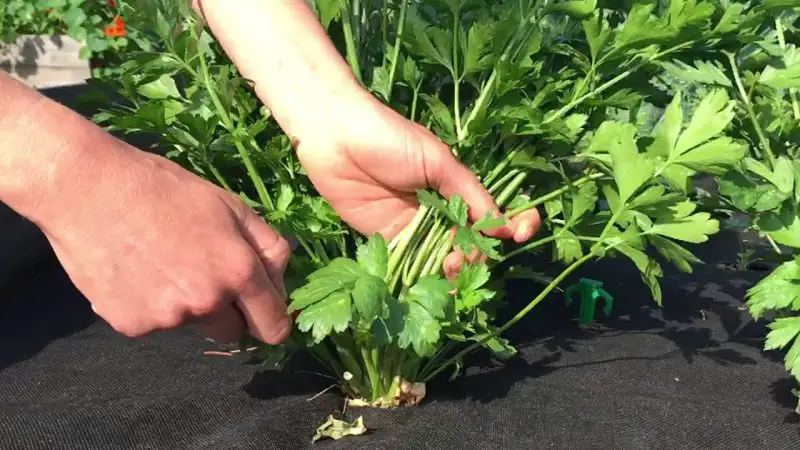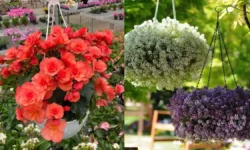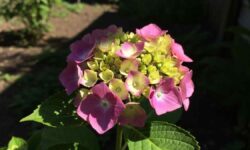Parsley is a versatile and aromatic herb that adds freshness and depth to countless dishes, from salads to soups and sauces. However, to truly enjoy its vibrant flavor, knowing how to harvest it correctly is essential. Many gardeners make the mistake of cutting parsley the wrong way or at the wrong time, which can lead to bitter-tasting leaves and a shorter harvesting period. Understanding the right harvesting techniques will not only maximize flavor but also encourage continuous growth throughout the season.
When harvested properly, parsley plants can provide fresh, aromatic leaves for many months. The key lies in understanding how parsley grows, which parts to cut, and the best time to collect the leaves. By following proper methods, you can maintain a healthy plant that keeps producing tender, flavorful leaves, perfect for culinary use.
Table of Contents
Understanding How Parsley Grows Before Harvesting

Parsley is a biennial herb, meaning it completes its life cycle in two years. In its first year, it focuses on producing lush green leaves, while in the second year, it bolts and sends up flower stalks, eventually going to seed. The most flavorful leaves are produced during the first year before the plant shifts its energy to flowering. For this reason, harvesting at the right stage of growth is critical.
The plant grows from a central crown, sending out multiple stems with clusters of bright green leaves. New leaves typically sprout from the center, while older, mature leaves are found around the outer edges. Knowing which leaves to cut ensures the plant continues producing new growth without becoming stressed. Understanding this growth pattern is the foundation for successful harvesting.
When Is the Best Time to Harvest Parsley?
Timing plays a major role in flavor when it comes to parsley. The ideal time to harvest is early in the morning after the dew has dried but before the sun becomes too intense. During this time, essential oils responsible for parsley’s signature aroma and taste are at their highest concentration. Waiting until midday, when the sun is strongest, can cause some of these oils to evaporate, resulting in less fragrant leaves.
The stage of leaf development is equally important. Young, tender leaves have a milder, sweeter flavor, while mature, fully opened leaves contain a more robust taste. Gardeners who prefer a stronger herbal flavor often wait for the leaves to fully develop before cutting them. However, avoiding leaves that are turning yellow or overly tough is important, as they tend to have a bitter undertone.
Regular harvesting throughout the growing season also helps maintain the plant’s productivity. By picking frequently, you encourage continuous growth and prevent the plant from prematurely going to seed, which can drastically reduce the quality and taste of the leaves.
How to Cut Parsley Without Damaging the Plant
The method of cutting parsley directly affects both flavor and future growth. Instead of pulling or tearing leaves by hand, which can stress the plant, always use clean, sharp scissors or pruning shears. This creates a clean cut, reducing the risk of disease and allowing the plant to recover quickly.
When cutting, focus on the outer stems first. These older leaves are ready for harvest and removing them encourages the plant to push new growth from the center. Cutting at the base of the stem, near soil level, ensures that the entire leaf stalk is removed. This method not only provides larger, more flavorful leaves but also stimulates the plant to produce more stems.
Avoid cutting from the center of the plant unless absolutely necessary, as this is where new growth emerges. Preserving the inner stems helps the plant continue to thrive and extend its harvesting period. By rotating your harvesting areas, you can keep the plant producing fresh leaves for months.
Encouraging Continuous Growth After Harvesting
Proper post-harvest care is just as important as the cutting method. Parsley plants thrive when harvested regularly, as it prevents them from maturing too quickly and bolting. After each harvest, providing the plant with adequate water and nutrients ensures it can recover and continue producing lush leaves.
Light pruning of any yellowing or damaged leaves helps the plant channel energy toward new growth. Applying a thin layer of compost or a balanced organic fertilizer can replenish the soil with essential nutrients lost during frequent harvesting. Keeping the soil consistently moist but not waterlogged also supports healthy regrowth.
Mulching around the base of the plant can help retain soil moisture and regulate temperature, which is particularly useful during hot summer months. With consistent care, a single parsley plant can provide multiple harvests over an extended period.
Harvesting Parsley for Maximum Flavor Preservation
Harvesting parsley at the right time is only half the battle; preserving its flavor after cutting is equally important. Freshly cut parsley should be used as soon as possible for the best taste, but proper storage techniques can help maintain its flavor for days or even weeks.
For short-term use, placing freshly cut stems in a glass of water, similar to how you would store fresh flowers, keeps the leaves hydrated and vibrant. Covering the top loosely with a plastic bag and refrigerating can extend freshness for up to a week.
For longer storage, drying or freezing parsley is an excellent option. However, freezing tends to preserve more of its natural flavor and color compared to drying. Freezing chopped parsley in ice cube trays with a bit of water or olive oil is a popular method, allowing you to conveniently add fresh-tasting parsley to dishes throughout the year.
Common Mistakes to Avoid When Harvesting Parsley
Many gardeners unknowingly reduce parsley’s flavor and lifespan by making a few common mistakes. One frequent error is overharvesting the plant too early in its growth. Cutting too many stems at once, especially from young plants, can stress the plant and slow regrowth.
Another mistake is neglecting regular harvesting. Allowing the plant to grow too long without cutting encourages it to bolt, which leads to tough, bitter leaves. Additionally, cutting only the leaves and leaving long bare stems can reduce the plant’s ability to produce new growth efficiently.
Using dull tools or tearing leaves by hand can damage stems and make the plant susceptible to disease. Always ensure you are making clean cuts at the base of the stem to encourage healthy regrowth and maintain plant vigor.
Extending Parsley Harvest Through the Season
Parsley is a hardy herb that thrives in cooler temperatures, making it possible to extend its harvesting season with proper care. In regions with mild winters, parsley can continue to produce fresh leaves well into the colder months. Protecting the plant with a layer of mulch or using a cold frame can help extend its growing period.
For indoor gardeners, growing parsley in pots near a sunny window allows for year-round harvesting. Indoor parsley thrives when provided with at least six hours of sunlight daily and consistent watering. By moving potted plants indoors before the first frost, you can enjoy fresh parsley even during winter.
Regular trimming, combined with proper watering and fertilization, ensures that parsley remains productive for as long as possible. With careful attention, a single plant can yield fresh leaves for many months.
FAQs About Harvesting Parsley
When Should You Harvest Parsley for the Best Flavor?
The best time to harvest parsley is early in the morning after the dew has dried but before the sun is too strong. At this time, the essential oils responsible for its fresh aroma and rich taste are at their peak, giving you the most flavorful leaves.
How Do You Cut Parsley Without Killing the Plant?
Always cut the outer stems at the base near the soil level using clean, sharp scissors. This method encourages new growth from the center while keeping the plant healthy and productive for a longer harvesting period.
How Often Can You Harvest Parsley?
Parsley can be harvested every one to two weeks during the growing season. Regular cutting stimulates continuous leaf production, ensuring a steady supply of fresh, tender leaves throughout the season.
Can You Harvest Parsley in Its First Year?
Yes, parsley is best harvested in its first year before it flowers. During this stage, the leaves are tender and packed with flavor. In the second year, the plant tends to bolt, producing tougher and slightly bitter leaves.
What Is the Best Way to Store Freshly Harvested Parsley?
For short-term storage, place parsley stems in a glass of water and refrigerate them loosely covered with a plastic bag. For long-term storage, freezing parsley preserves its fresh flavor better than drying, especially when frozen in ice cube trays with water or olive oil.
Conclusion
Learning how to harvest parsley the right way is essential for achieving maximum flavor and encouraging continuous growth. Timing your harvest during the morning hours, cutting outer stems at the base, and providing proper post-harvest care are all key to keeping the plant healthy and productive. By avoiding common mistakes and storing parsley correctly, you can enjoy its fresh, aromatic taste in your dishes for an extended period.
With the right techniques, a well-maintained parsley plant can provide abundant harvests for months, ensuring you always have a supply of this versatile herb at your fingertips. Whether you’re an experienced gardener or a beginner, mastering the art of parsley harvesting will elevate your culinary creations with vibrant, fresh flavor.






